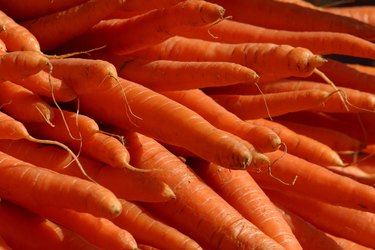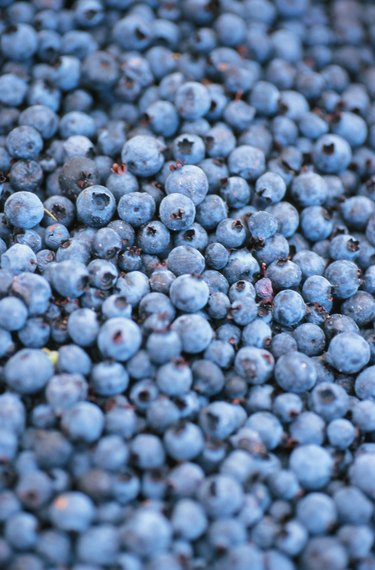
PH is the measure of hydrogen and oxygen ions in a solution. For your body to function properly, the cells need to be balanced in an alkaline state, which is a pH of 7 or higher. Similarly, knowing the amount of natural pH in the soil can help determine how well a garden will perform. Several types of flowers, vegetables and berries are natural indicators of pH. Checking the natural pH of the garden soil before planting is a good way to determine what plants, flowers or shrubs should be planted and which should be avoided.
Flowers That Indicate pH
Video of the Day

There are several flowers that are natural indicators of pH. Delphinium, geranium, morning glory, pansy, petunia, primrose, rose, tulip and violet all indicate high or low levels of acid in the soil, depending on the color changes in the solution. But the simplest to use are marigolds, hydrangeas, red cabbage and red wine because the natural pigments in these flowers, vegetables and wine will change based on the pH of the soil in question.
Video of the Day
Vegetables That Indicate pH

Many vegetables also indicate high or low levels of acid in the soil, including beets, carrots, onions, red or purple cabbage, radishes and rhubarb.
Berries That Indicate pH

Berries can indicate the soil pH. Both black and blueberries, cherries, the leaves of horse chestnuts and strawberries can indicate whether the soil has a low or high level of pH.
How to Indicate pH

The key elements in soil that determine how healthy your garden will be are nitrogen, pH, phosphorous and potassium. In addition to watching the different pigments in garden berries, flowers or vegetables you might want to perform a soil pH test every few years. A soil test kit or even a pH meter can be purchased at most garden stores. They will quickly tell you how balanced the garden is.
Planting Based on pH

Many gardeners like to plant gardens based on pH. By planting flowers, vegetables or fruits of similar pH balances, it is easier to keep the soil in balance. The plants will use nutrients at the same rate, for example. By knowing what pH is important to the plantings, you can avoid problems later on which occur from planting flowers or vegetables which will not do well in your soil type.